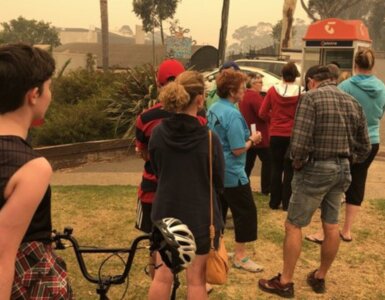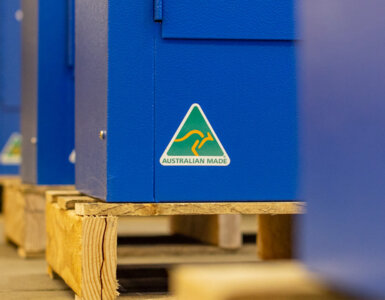The Murray-Darling Basin has been making headlines lately. This river system is home to Australia’s food bowl, producing a staggering 40% of our food and fibre. Yet the Basin Plan that manages it is about to be overhauled and a lot of people are extremely worried. It is an incredibly complex issue but an equally important one. Australian Farmers unpacks what is the big deal about this river system, why the legislation behind it is before Parliament and how changes might drive up the cost of our food.
What is the Murray-Darling Basin?
The Murray-Darling Basin is Australia’s largest river system. It is a 1 million square kilometre area comprising interconnected rivers and lakes across Queensland, New South Wales, the ACT, Victoria and South Australia – about the size of France and Spain combined.
Growing food & fibre. About 40% of Australia’s food and fibre is grown in the Basin, including almost all of our rice, nearly three-quarters of our grapes and a third of our dairy. It supports 7,300 irrigated agricultural businesses and total agricultural output is worth more than $2 billion each year.
People. It is home to 2.3 million Australians and there more than 50 First Nations in the Basin.
Environment. It encompasses 16 protected wetlands, more than 50 native fish species and 120 species of Australian birds.
Enjoyment. The tourism industry is worth $11 billion annually.

What is the Basin Plan?
Millions of people rely on the rivers as an important water source, but this has impacted river health. Droughts have exacerbated the problem with some sections becoming saltier and there have been blue-green algae outbreaks, which of course impact native fish and wildlife.
The river system’s health came to a head in the millennium drought, one of the worst in Australia’s history. Low rainfall and flows saw water restrictions imposed, limiting how much water people could use in their homes, crops were threatened and many died, and ecosystems were damaged. It was clear something had to be done and in 2007 the Federal Parliament passed the Water Act which put the Murray-Darling Basin Authority in charge of sustainably managing the Basin, balancing the needs of people and the environment.

In 2012, the Murray-Darling Basin Plan was developed to further limit the amount of water used by people so it could be returned to the environment, building on the work of the Living Murray Initiative. It sounds simple but it’s a delicate agreement and took the Federal Government and the five state and territory governments years to negotiate.
The deal included recovering 3,200 gigalitres (GL) for the environment, water previously used for consumption. So far, the Plan has gained 2,100 GL – equivalent to four Sydney Harbours – from irrigators alone through buybacks. Other water savings have been made through efficiency projects but the Plan won’t reach the full amount by the agreement’s June 2024 deadline.
While the Water Minister announced a deadline extension and sought more ideas to reach the recovery amount this year, she has gone on to introduce a Bill to parliament to change the Water Act. What the Minister wants to achieve is to lift the buyback cap so more water can be bought from people with water allocations.

However, given the pain buybacks inflicted on people in the past, the move has been strongly opposed by farming bodies and regional communities and the new-look agreement has lost the Victorian Government’s support. People are also upset because they feel the Minister hasn’t looked at the ideas they submitted as part of the recent consultation. They feel buybacks are the easy option and the focus is just on water recovery whereas there are other areas the government should look at to improve the Basin environment.
How do buybacks work?
Water licences are traded all the time. However, once they are sold for environmental purposes, it’s permanent. Government buybacks distort the water market and push up the value of water allocations. Nobody is forced to sell their allocation but they can be sold for millions which the taxpayer pays for.
Why do we hear buybacks are bad?
The answer is two-fold but it comes down to agriculture. Much of the economy and the communities in the Basin rely on agriculture for employment, so when this is reduced because buybacks can in the worst case scenario see farms shut down, jobs are lost. The flow on impacts means services like schools and health care can be reduced as people move away, businesses suffer and communities struggle socially as sporting clubs are impacted because of a lack of numbers. The impacts are wide ranging – socially and economically.
The other part is less consumptive water means less production. As we saw earlier, the Basin produces about 40% of the country’s food and fibre. You take some of this away and it puts pressure on prices, meaning we all pay more at the supermarket checkout.
People are highly stressed and worried about the future.
In 2020 an independent assessment of the social and economic conditions in the Basin was commissioned by the Federal Government. The report found people “are highly stressed and worried about the future. While we did hear from communities that are more optimistic, there was often a shared sense of mounting pressure and growing uncertainty.”
People were concerned about withdrawing services and declining infrastructure.
“Outer regional and remote communities, and smaller communities, often have less economic diversity and rely more on agriculture for jobs,” the report said. “Our investigations have found that the suite of Basin water reforms is delivering uneven outcomes across the Basin, with some communities doing well and others faring very badly.”
What has been achieved?
The Basin has seen farmers and communities implement water efficient infrastructure, such as water recycling systems and different irrigation systems. There are farmers who are using their water allocations for private wetlands – also an example of water being used for the environment but reflected as a consumptive use.
When the panel who prepared the abovementioned independent report spoke to Basin communities, it found: “Communities recognise the importance of environmental flows, but many people are struggling to see the intended benefits and are concerned about the declining health of rivers, floodplains, and wetlands. We heard this view from environmental groups, First Nations groups, dryland farmers and irrigators, and recreational users.”

It is clear farmers and communities care about the rivers, but they want the government to think beyond buybacks.
“As part of this effort, the Australian, state and local governments should work with town water suppliers to develop regional pilot programs for alternative urban supply sources, including indirect potable reuse,” the report said.
Is “just add water” the answer to helping the environment?
It’s argued water isn’t the only solution the government should focus on to improve environmental outcomes. For example, the most recent report of the NSW Government Chief Scientist into Menindee fish deaths, when 20-30 million fish died, found the key contributors were water quality and lack of mobility for fish.
“Water policy and operations focus largely on water volume, not water quality,” the Chief Scientist’s report said.
The suite of Basin water reforms is delivering uneven outcomes across the Basin, with some communities doing well and others faring very badly.
One of the ways to improve water quality is to eradicate river pest, carp. Their numbers have exploded following the 2022 floods.
They damage the vegetation and banks and outcompete native fish species.
Other options to improve river health include addressing bank erosion and cold water pollution, native fish breeding programs and implementing more fish ladders or fishways to allow the fish to migrate past locks and weirs.
Article sources:
Final Report: Independent assessment of social and economic conditions in the Murray–Darling Basin







































Add comment